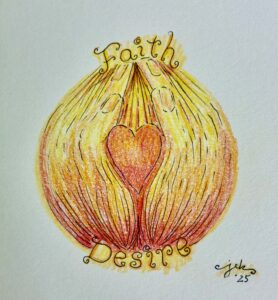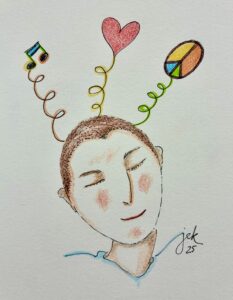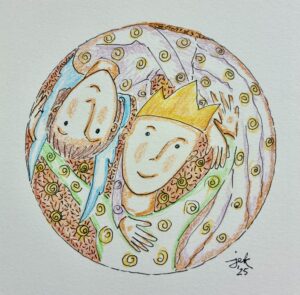
-Artwork © 2025 Jan Ketchel
Thomson Jay Hudson’s 1893 publication of The Law Of Psychic Phenomena introduced an epochal distinction between the thinking of the conscious and subconscious minds. In a nutshell, the conscious mind is capable of a reasoning that can think outside the box whereas the subconscious mind never goes outside the box of its given, beginning premise.
Thus, for example, although all cloudy signs might suggest the coming of a rainstorm, the conscious mind might remain open to the possibility of a sunny day. In contrast, if the subconscious mind is told that the body has a cold, it will employ, without question, all its manifesting power to generate that state of illness in the body.
The subconscious mind takes, as absolute fact, what it is told—or the suggestions it is given, consciously or unconsciously—by the conscious mind. In contrast, the conscious mind is capable of seeing probabilities, but also possibilities, for outcomes that lie beyond a given premise.
Tell the subconscious mind that you are inadequate and it will package that suggestion, without contradiction, into a habit that becomes the overriding sense of self-definition that influences enduring moods, physical expression, social relationships and enduring beliefs about the self.
On the other hand, the conscious mind, while heavily under the impact of a negative belief, still has the possibility to imagine or believe that it can change, envisioning an adequate, if not thriving, sense of self. The conscious mind has the ability to exercise its will to logically create, change, or petition the subconscious mind to manifest a new possibility.
While the conscious mind has the freedom to assert life in new directions, the subconscious mind must contend with the power of the suggestions it receives from its evolutionary history, most intensely expressed through instinctive or hereditary reactions.
Despite the power of these reactions, as reflected in the archetypes of the collective unconscious, the subconscious mind does remain attuned to new suggestions issued from our conscious thoughts and intentions. The challenge for the conscious mind is to make positive suggestions for the greater good of self, and the world, rather than for the greater good of the ego, or lower desires within the self.
This is the greatest challenge for the modern world: Do I intend a world for the greater fulfillment of my own desires alone, or for the greater good of the entire world?
The dual mind reflects the human ability to both determine what is best and to fully manifest it into life. On the one side, the conscious mind has access to unlimited possibilities; on the other, the subconscious mind has access to the knowhow and substance to bring to life its accepted suggestion.
The overarching necessity for the conscious mind to deliver a successful suggestion to the subconscious mind is faith. Divorce faith, in this definition, from any spiritual association. I define faith here as acknowledging the possibility, despite all logical argument, that anything is possible.
That possibility alone is the hypothesis for any experiment. Scientific method asks us to be open to test any possibility. The methodology, in the case of suggestions to the subconscious mind, is to suspend judgment and imagine an outcome one desires. Desire is the motive power of suggestion. Desire attracts like manifestation.
If fear has been an old dominant experience in my life, my desired new outcome may be to exhibit a pervasive sense of courage. The suggestion I state is, “I Am Courage.” I visualize myself calm and confident in previously challenging circumstances. Coupled with imagination and positive feelings, I state my suggestion often, sometimes parrotlike, but always truly embodying the confidence of the intention.
As always, we must remind the conscious mind that its role is to suggest, not enact. When it delivers its suggestion to the subconscious mind, it must truly turn over control to the powers of the subconscious mind to manifest. The only job for the conscious mind is to remain persevering in its practice of the stating of its suggestion, feeling its desire, and imagining its materialization.
It often happens that the path the subconscious mind chooses brings synchronicities into our lives, which invite conscious realization and spur action toward the ultimate goal. However, the creative process and timetable of enactment are totally in the hands of the subconscious mind. Hands off!
The little bit of faith that the conscious mind requires, the faith that anything is possible, provides the legitimacy to experiment with the manifesting powers of the dual mind.
Set up your own experiments. See what happens! You won’t be disappointed.
Just a little bit of faith,
Chuck




